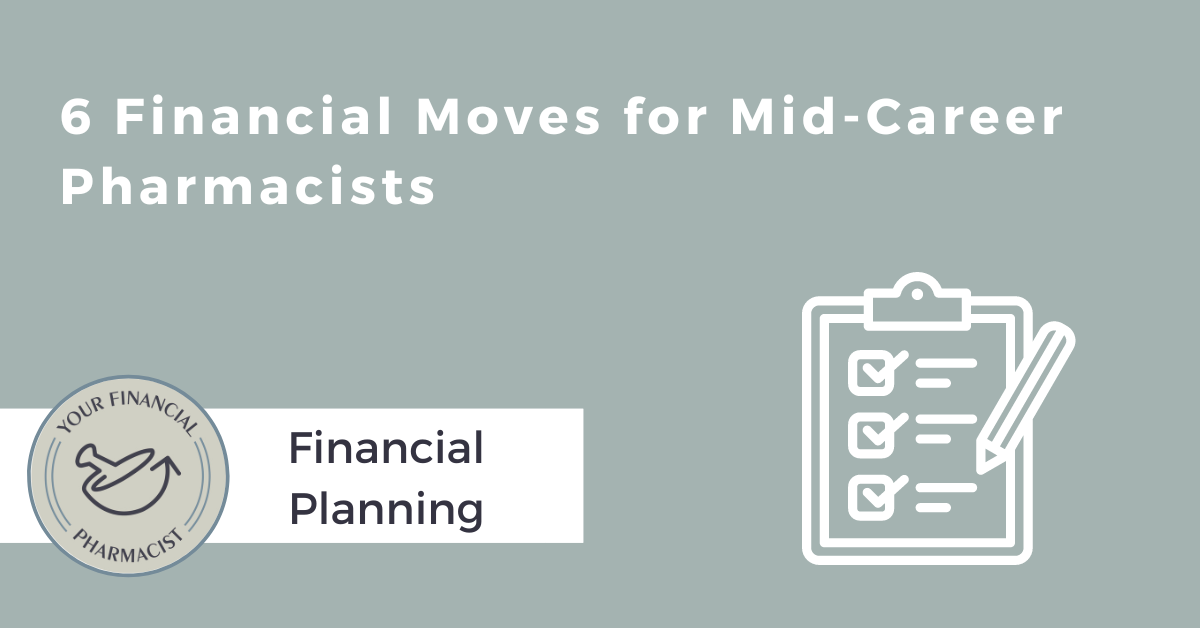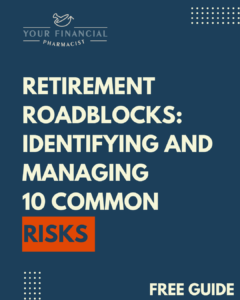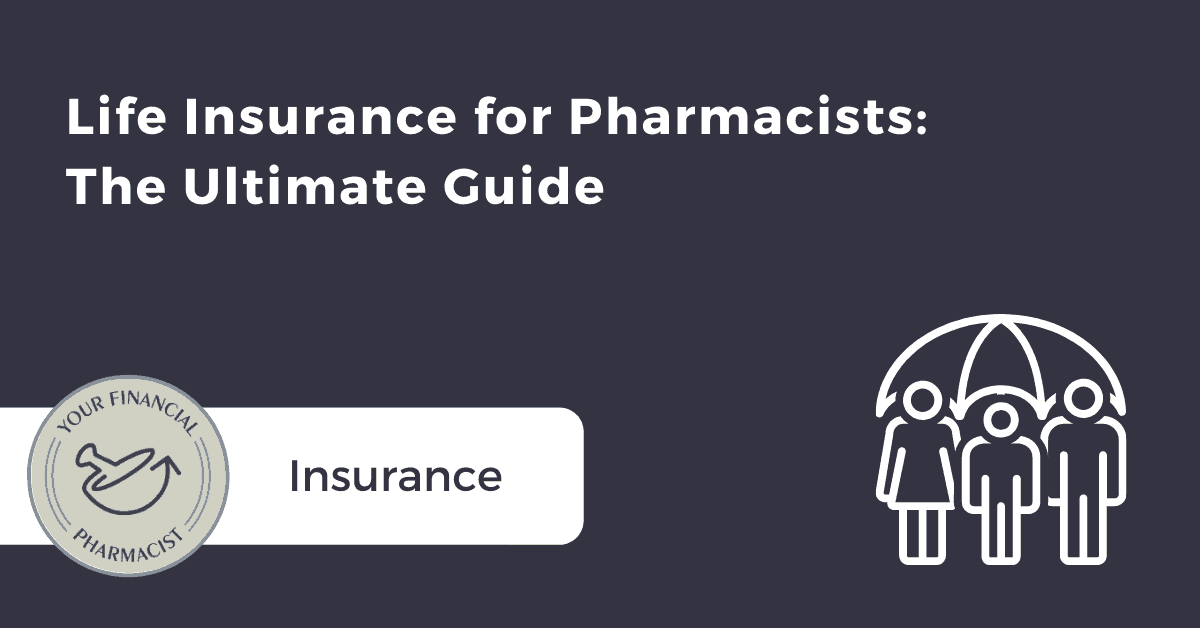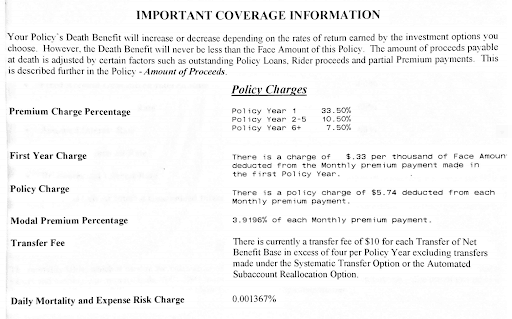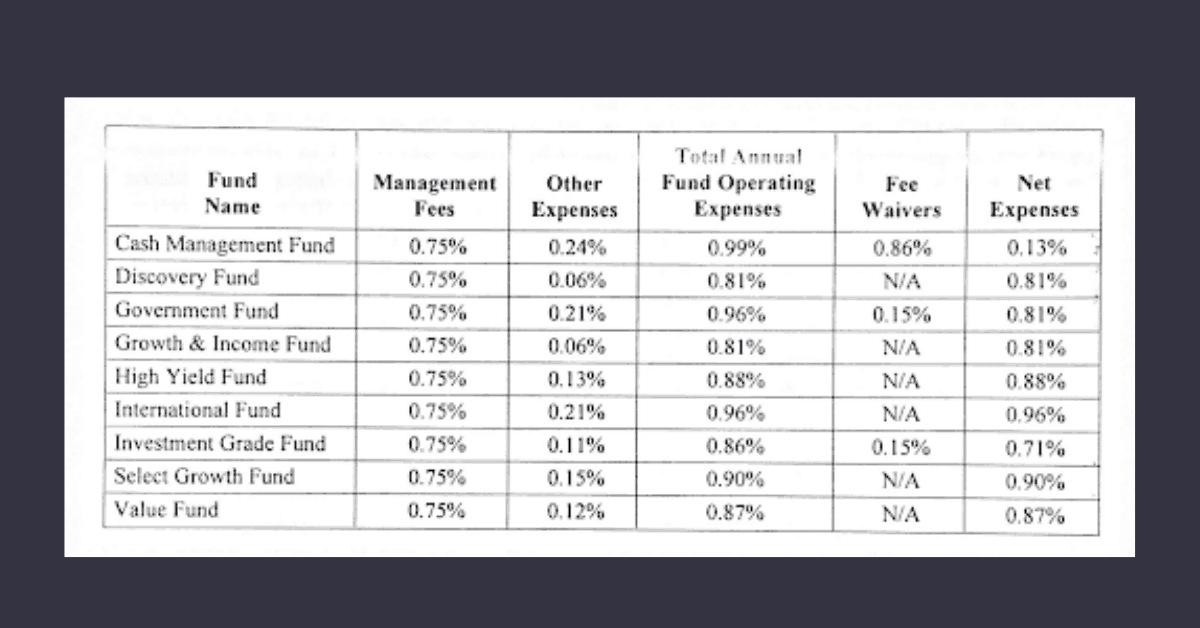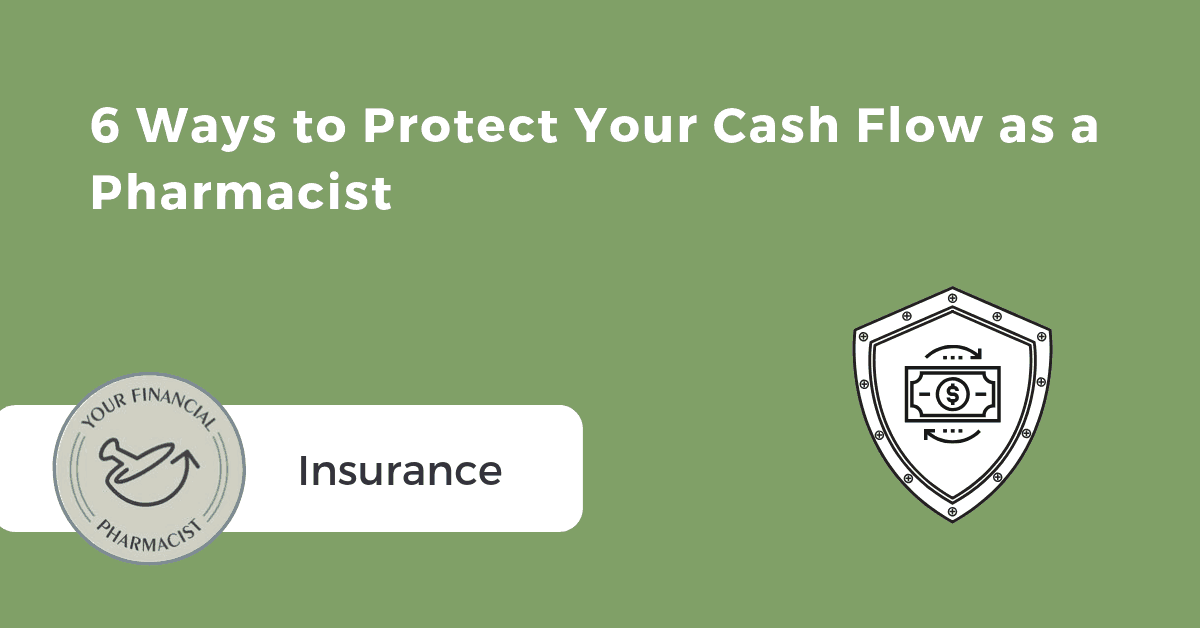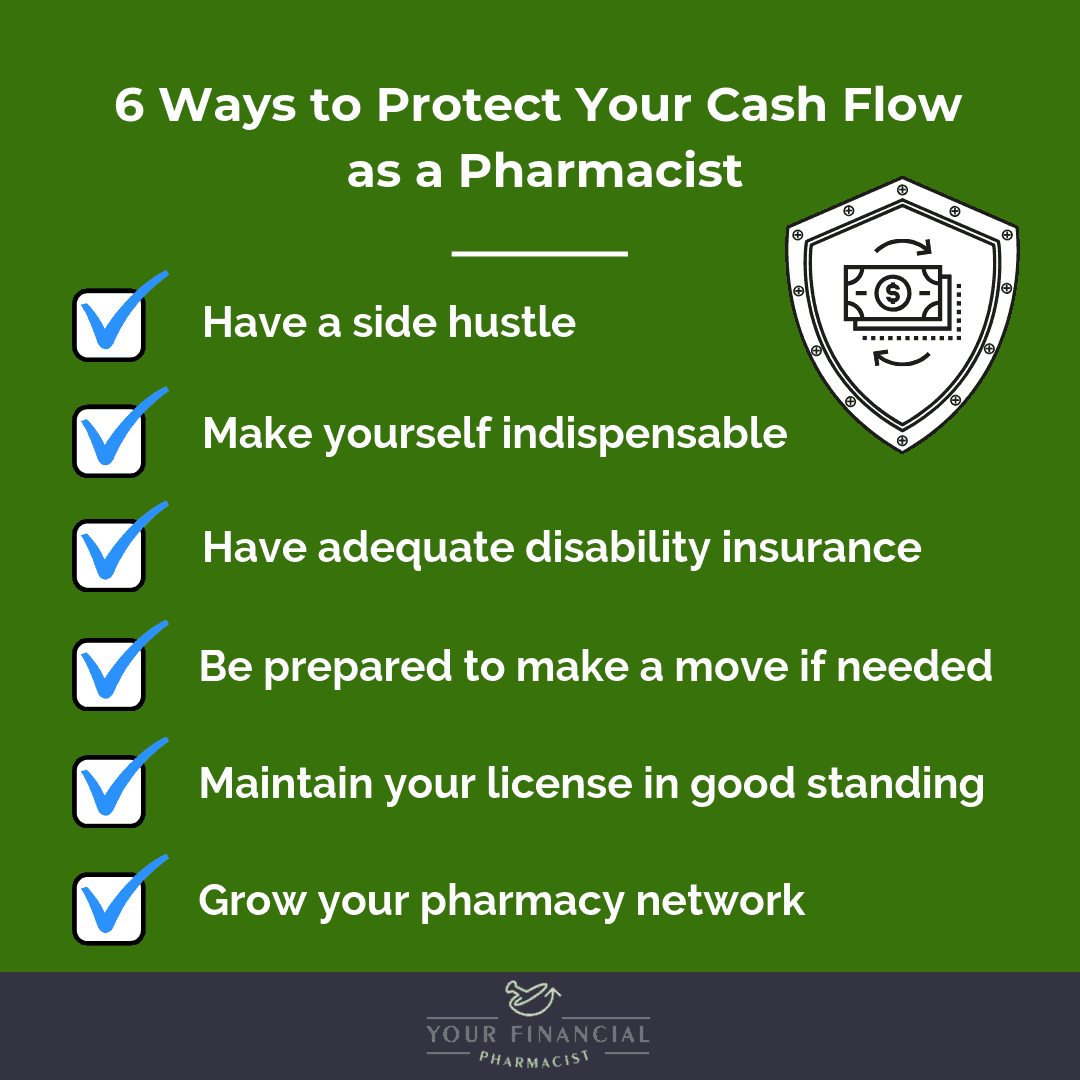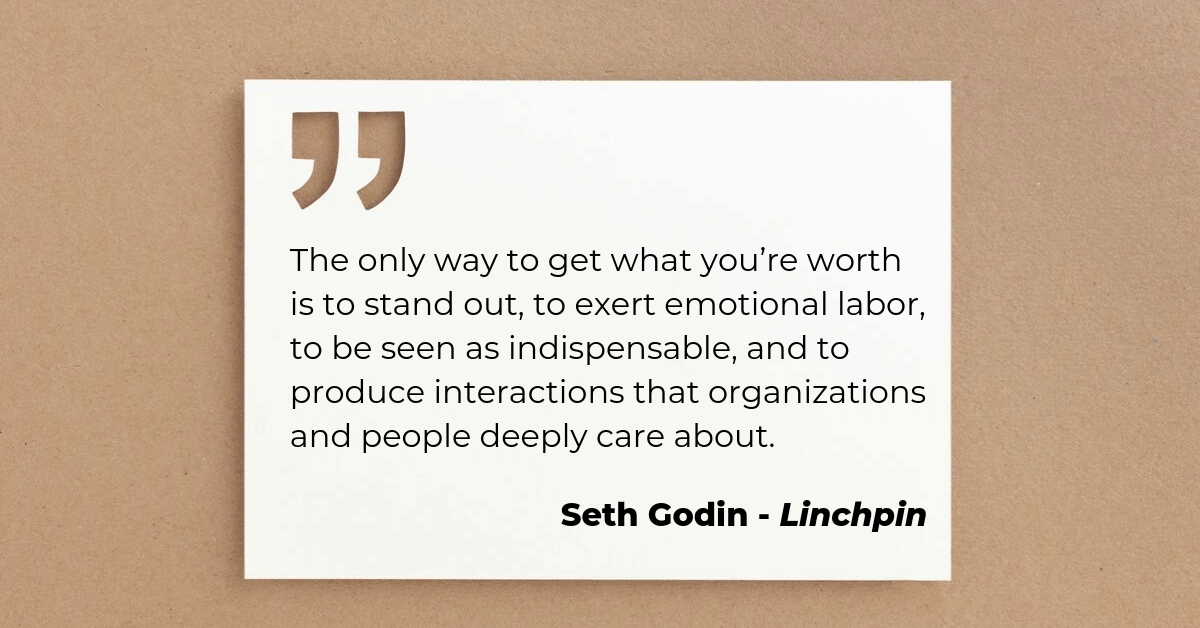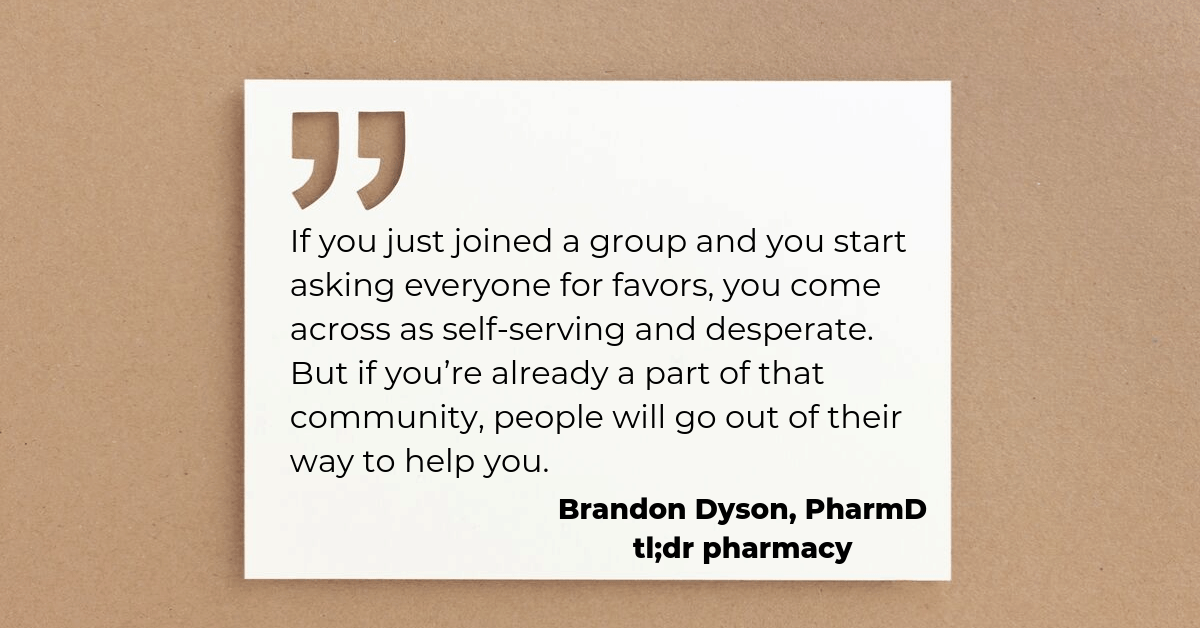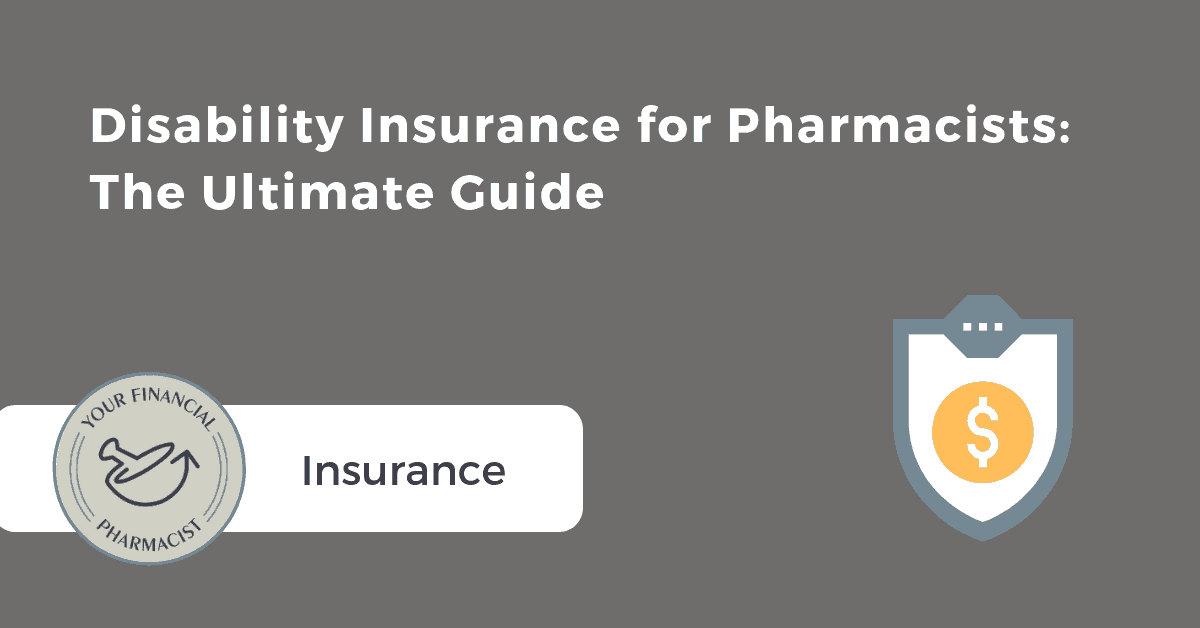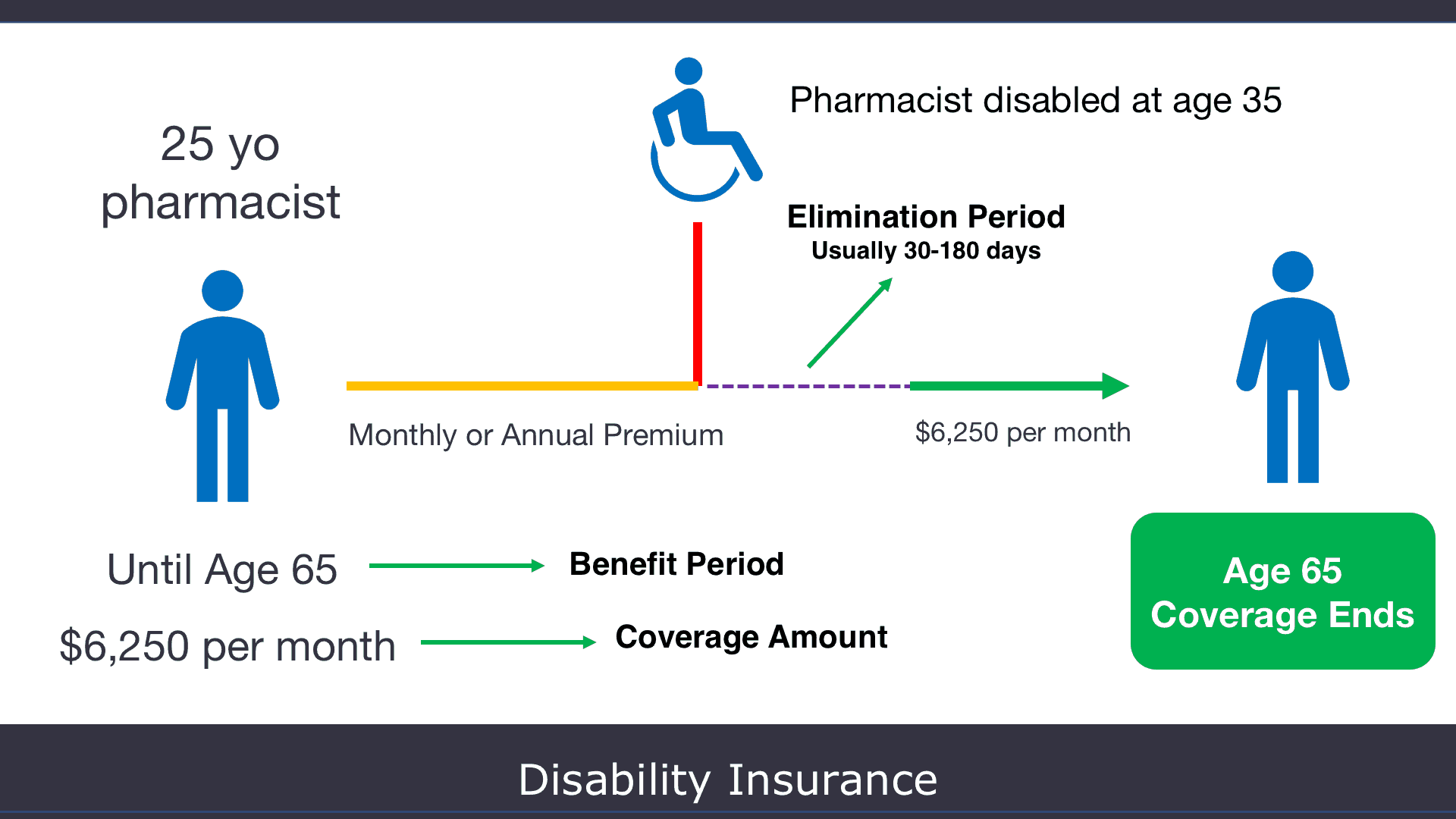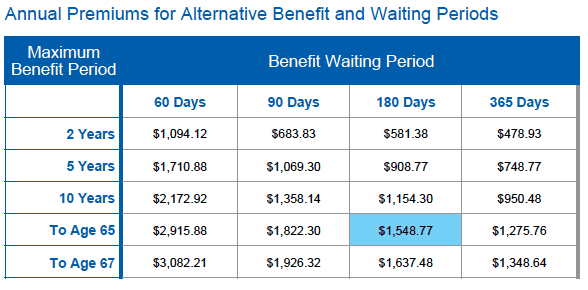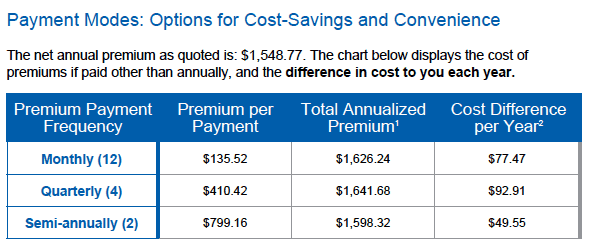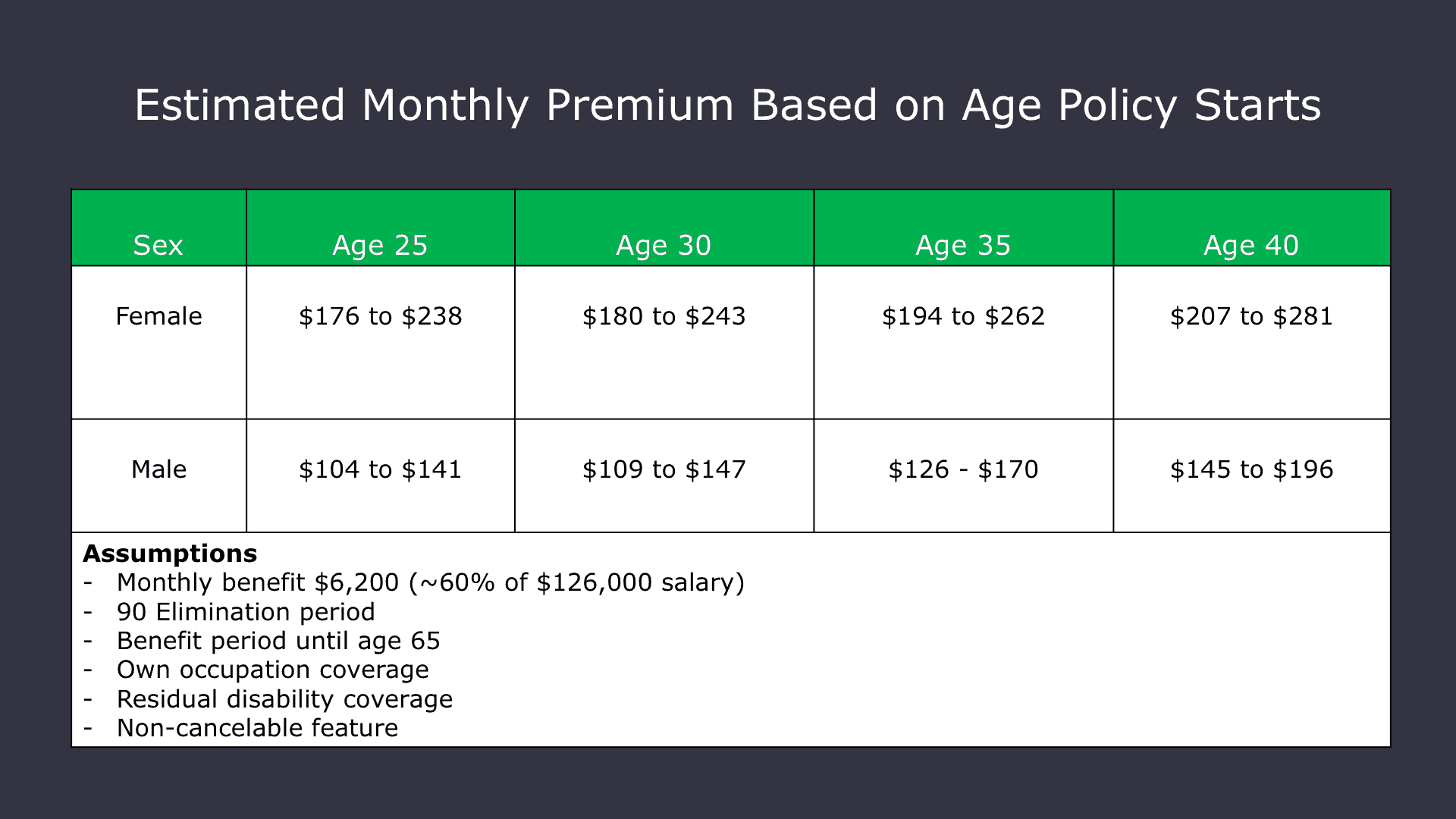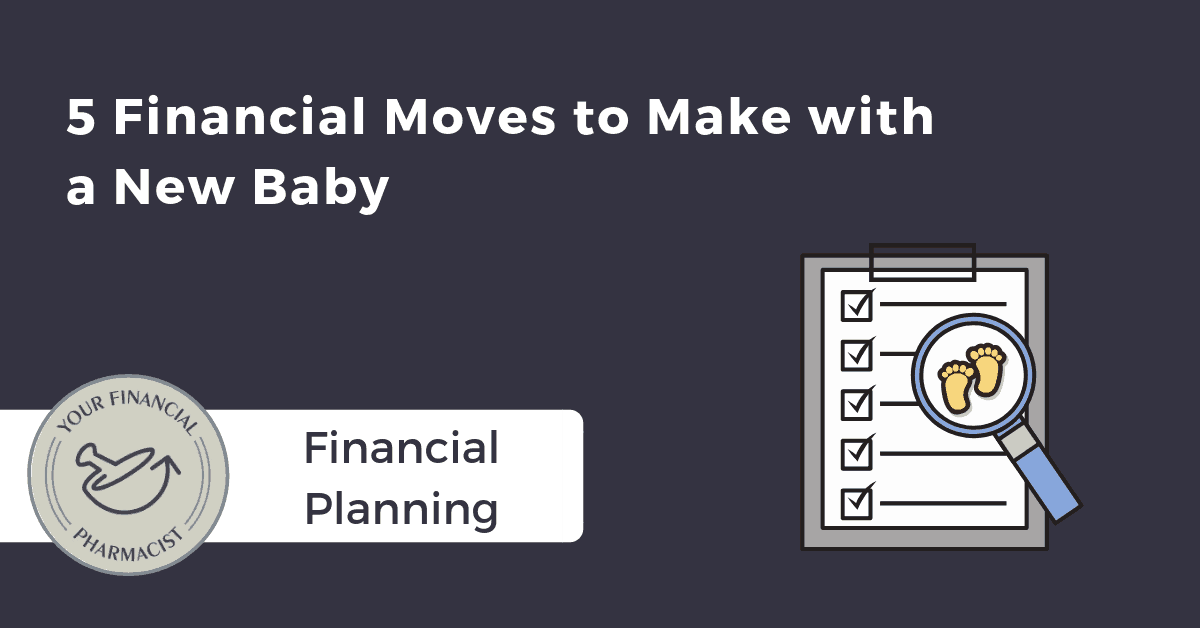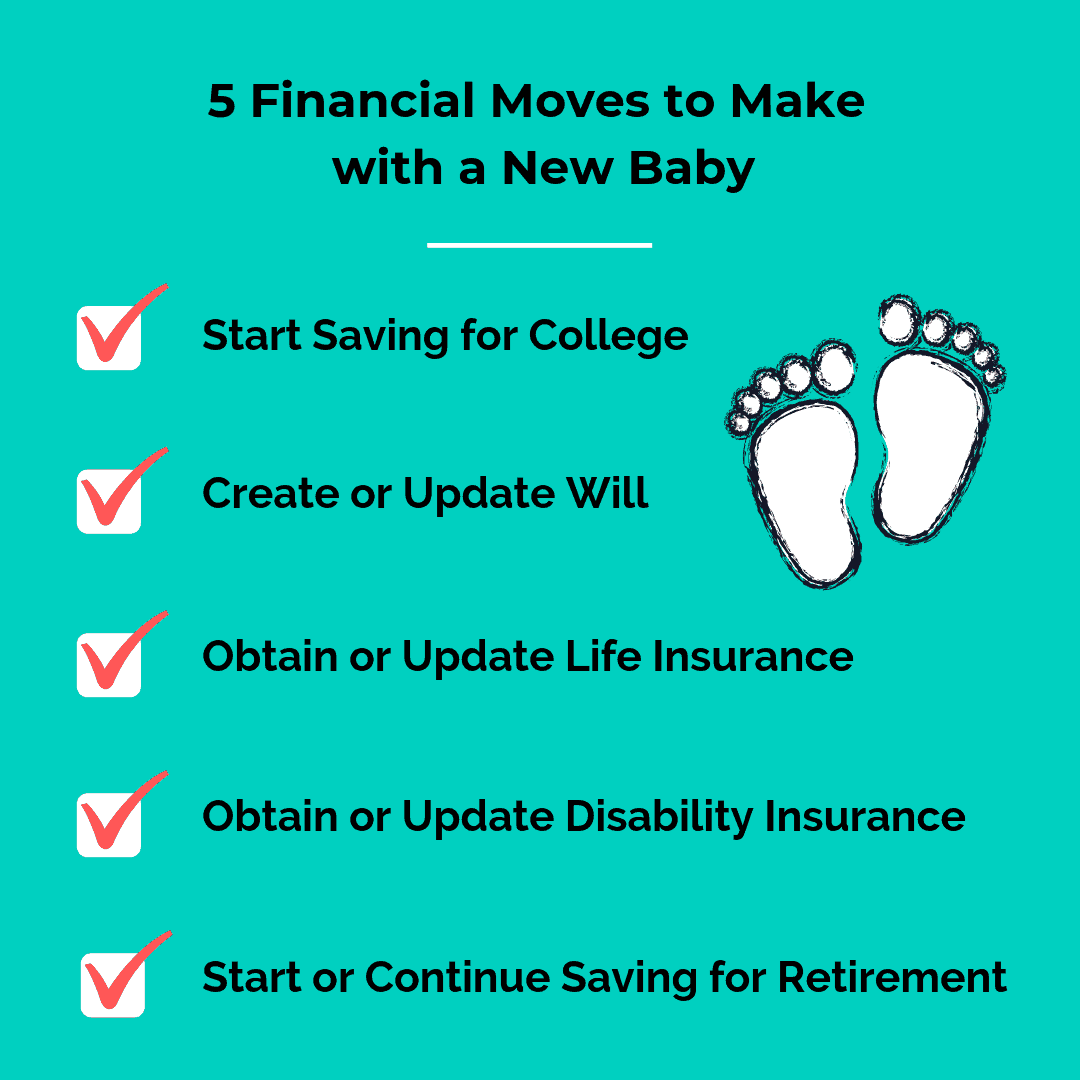Tim Ulbrich and Tim Baker tackle questions from the YFP community on life insurance needs for expectant parents and eligibility for direct Roth IRA contributions.
Episode Summary
On today’s episode, YFP Co-Founders Tim Ulbrich, PharmD and Tim Baker, CFP tackle two important questions from the YFP community.
First, they dive into how to project your life insurance needs when welcoming a new baby into the family and then Tim and Tim break down how Modified Adjusted Gross Income (MAGI) is calculated to help you determine if you’re eligible for direct Roth IRA contributions.
If you have a question you’d like featured on an upcoming episode, visit yourfinancialpharmacist.com/askyfp or email [email protected].
Key Points from the Episode
- [0:00] Introduction and Episode Overview
- [00:54] Question 1: Life Insurance Needs for Expecting Parents
- [01:33] Tim Baker’s Advice on Life Insurance and Retirement Plans
- [09:17] Question 2: Calculating Modified Adjusted Gross Income (MAGI)
- [09:34] Understanding AGI vs. MAGI
- [14:33] Conclusion
Episode Highlights
“Having a baby tends to lead to some reflection about a lot of things, including finances, you know, savings, life insurance, disability, estate planning, education planning, all those things kind of come to mind.” – Tim Baker [1:39]
“ If you’re talking about the retirement plans, when a spouse dies, their assets essentially transfer to the beneficiary. Most of the time it’s going to be you as the surviving spouse.” – Tim Baker [3:23]
“One of the things to remember with Roth IRAs is that you can typically take out your basis or what you can contribute without penalty or tax.” – Tim Baker [4:24]
Links Mentioned in Today’s Episode
- Ask YFP a Question
- Email YFP a Question: [email protected]
- Life Insurance for Pharmacists: The Ultimate Guide
- YFP Rx Money Roundup #18: Can I do a backdoor Roth IRA myself?
- YFP YouTube Channel
- YFP Book a Discovery Call
- YFP Disclaimer
- Subscribe to the YFP Newsletter
- Tim Ulbrich on LinkedIn
- Tim Baker on LinkedIn
- YFP on Instagram
- YFP Facebook Group
Episode Transcript
Tim Ulbrich: Hey everybody, Tim Ulbrich here. Welcome to this week’s episode of the YFP podcast, where we strive to inspire and encourage you on your path towards achieving financial freedom today. YFP co founder, COO and certified financial planner. Tim Baker joins me to answer two questions from the YFP community.
Tim Ulbrich: One on projecting life insurance needs and another on how modified adjusted gross income is calculated to know whether or not you’re eligible to make Roth IRA contributions. If you have a question you would like for us to feature on an upcoming episode, head on over to your financial pharmacist.com/ask yfp to record your question or send us an email at [email protected].
Tim Ulbrich: And before we get started, I wanna let you know that we’re now publishing the podcast in video form on YouTube. If you wanna watch this [00:01:00] episode, make sure to subscribe to the Your Financial Pharmacist YouTube channel where we’ll publish. New shows each week. All right, let’s jump in with our first question, which came to us via email.
Tim Ulbrich: And that question is. My wife and I are pregnant and are reviewing our life insurance policies. If one of us passes away, does the other spouse have early tax free access to use the deceased spouses Roth IRA 401k SEP IRA or solo 401k, or would the spouse still have to wait until they are retirement age, typically 59 and a half.
Tim Ulbrich: To access. We’re trying to determine how much more life insurance we need to buy with a new baby on the way. My wife and I are in our thirties. Tim Baker, what are your thoughts on this?
Tim Baker: Yeah, so first of all, congrats on on baby coming. Um, that’s uh, that’s monumentous. I feel like Tim having a baby tends to lead to some reflection about a lot of things, including finances, you know, savings, life insurance, disability, [00:02:00] estate planning, education planning, all those things kind of come to mind.
Tim Baker: Um, you know, I think. If if I’m, if I’m answering this question, I separate these things in terms of, like, life insurance versus, like, you know, um, retirement plans. Um, because I think, especially when you’re young, you know, spending some money on a, on a fairly inexpensive term insurance to keep those.
Tim Baker: Retirement plans, um, unadulterated is worth it. Um, because, you know, 1 of the misconceptions is like, when you retire. You, your expenses are going to be, I wouldn’t say they’re going to be the same as if there’s 1 person versus 2, but it’s going to be, you know. It’s going to be pretty expensive. So like, I, I wouldn’t look at that as like, as insurance.
Tim Baker: So I think I would look at it in, in the, in the confines of like, okay, this is for the purpose of retirement. And this is the purpose of, you know, insurance. [00:03:00] So there are different rules for different types of accounts, um, and different types of beneficial, uh, different types of beneficiaries. So. Um, you know, if you’re both in your thirties, you’re having a baby, if you’re really healthy, I would look at term insurance.
Tim Baker: You know, I always kind of talk about the rule of 30, which I have to look at, but basically, uh, to see if that still holds Tim, but the rule of 30 was you could buy a half a million dollar term insurance policy. Um, 30 year policy. If you’re in your 30s for about 30 bucks a month. Right? So I’m sure prices have gone up since I’ve been talking about that.
Tim Baker: So I have to, I have to make sure
Tim Ulbrich: Sounds about right. Yeah.
Tim Baker: I think that is important to understand. So, um, but when, if you’re talking about the retirement plans, when a spouse dies, each. their Their assets essentially transfer to the beneficiary. Most of the time it’s gonna be you as the spouse, um, the surviving spouse.
Tim Baker: So there’s really five options with, with these types of IRAs. Now, 4 0 1 ks and 4 0 3 Bs will be a little bit different, but I’m gonna speak specifically about IRAs. [00:04:00] But first option you can do is you can keep the IRA so a beneficiary can withdraw the funds even if they’re younger. Then 59 and a half 59 and a half without paying a 10 percent early withdrawal penalty.
Tim Baker: If the deceased has already started taking distribution. So in this case, that wouldn’t be that wouldn’t be it because you’re younger. Um, a surviving spouse, a minor child or disabled person is required to take what’s called RMDs required minimum distributions based on the deceased person’s age. Rather than the beneficiary, if the, if the air is not a spouse and there’s different rules.
Tim Baker: So there’s, there’s kind of spousal rules and non spousal rules. One of the things to remember with, with Roth IRAs is that you can typically take out your basis or what you can contribute without penalty or tax. Right? So that’s important to know off, off the rip. The second option is, Roll over the IRA.
Tim Baker: So beneficiaries can roll assets into a personal IRA without paying income tax or early withdrawal penalties, unless they are 59 and a half. So a rollover [00:05:00] into an inherited IRA does not incur penalties. If the assets have been in the accounts for 5 year, 5 years. Um, and this option Tim is only. Uh, open to our surviving spouse who must transfer to the same type of account.
Tim Baker: So traditional to the traditional or Roth to Roth. Um, the third option here is to convert to a Roth IRA. So that in this case, you know, we’re talking about a Roth IRA. You could also disclaim part of the assets. You say, I don’t, I don’t want it or cash out the IRA. So in most cases, what I would say from a planning perspective, um, what I would say is Don’t think of your spouse’s, um, retirement house assets as a form of insurance.
Tim Baker: I would say by the insurance, but if you do get into a pinch from a, from a cashflow perspective, you can access those funds, especially, um, if you are the spouse and if you’re looking at basis without taking the penalties. So there’s, there’s a few different layers of sorts that I would go through before.
Tim Baker: You know, get into a point where you can [00:06:00] completely cash out the IRAs. But is, this is just like a, um, this is typically just like a. Um, like a backdoor Roth conversion, the flow chart on this can be very complicated in terms of, okay, when did they start distributing it? Did they not? How old’s the, the, the deceased spouse?
Tim Baker: How old’s the surviving spouse, et cetera. So it can be very complicated. So I think if I’m in my thirties, I’m basically layering a little bit more. Uh, term insurance where I feel comfortable and I’m, I’m treating that, um, deceased spousal IRA or 401k as if it’s, you know, my own retirement plan and not, you know, not an insurance, um, bump, so to speak.
Tim Ulbrich: Yeah. Tim, I like how you’re separating out these two things. And I do love the question, right? Because there’s a, there’s an intentionality and I can tell some in depth analysis going on that we’re not just applying blanket rules of how much term life insurance do I need, but actually trying to get to the question, which needs to be answered when it comes to buying term life insurance, which is what do I [00:07:00] need this policy to replace?
Tim Ulbrich: And in this question, there’s some background questions of, Hey, well, if there are retirement Will those be accessible or not? I’m with you, right? If someone’s in their thirties, you know, not advice for them, but I would think of it the same way you are. If I’m in my thirties, babies on the way, assuming relatively healthy, inexpensive term life insurance policy.
Tim Ulbrich: If I’m looking at these two things, just to put some numbers to this, and I’m looking at, Hey, maybe I’d need a million dollar term policy versus a one and a half or 2 million. If I were to exclude these, uh, retirement assumptions, when you consider the cost of these policies, again, we’re making some assumptions of health and other things, but based on age, like that feels kind of like a no brainer, right?
Tim Ulbrich: In terms of keeping it clean separation of these two things and relatively inexpensive, assuming that the monthly budget can handle the extra, whatever it’d be, you know, 20, 30 bucks a month to add on to the term coverage. So, um, I like that because I think sometimes we can make these things maybe overly complicated and, uh, you know, [00:08:00] I, I like the intent of the question, but, but I also like thinking of these buckets separately in there.
Tim Ulbrich: And there’s a peace of mind component here too, knowing that, Hey, we’ve got the life insurance piece that’s purely for the sake. Hopefully we never use it, but if it’s, if it’s there, you know, we have access to those funds.
Tim Baker: Yeah. And there, and there are other things that I would potentially pull levers before I would even look at retirement plans that could be. You know, leverage in debt or other things, you know, like, uh, a HELOC or something, I think, even before I would, I would start cashing in retirement plans. So, again, I think it’s, uh, all the reason to have, you know, this is about planning, not a plan, you know, all the reason to have a planner to kind of work through life events and hopefully nothing like this ever happens.
Tim Baker: But I think it’s a great thought experiment to kind of go down
Tim Ulbrich: One last thing I’ll say on this before we move to our second question is for those listening that maybe don’t have term life insurance or wondering about, you know, what’s all involved in a term life insurance policy. How do I begin to think about and evaluate what the [00:09:00] need is? Or if you have a term life insurance policy, uh, wondering if, if that coverage is appropriate, or maybe you just have an employer.
Tim Ulbrich: Policy and you’re wondering about your own policy. We’ve got a very comprehensive resource life insurance for pharmacists the ultimate guide Uh that will give some great background educational information on this topic We’ll link to that blog article in the show notes so you can read more and learn more on that Tim said you mentioned backdoor roth.
Tim Ulbrich: We got it. We got to go there, right? So
Tim Baker: my
Tim Ulbrich: your favorite topic. Yeah, so our second question Our second question is also came into us via email. How do you calculate? Modified Adjusted Gross Income to know if you’re eligible to contribute. To a Roth IRA. What, what are your thoughts on this one?
Tim Baker: Yeah. So a lot of us use magi and AGI synonymously. So modified adjust, just to adjusted to gross income is not the same as adjusted gross income. Um, although we, again, we use them the same. So to [00:10:00] determine, so just to kind of throw out some numbers, um, if you are filing single and you’re modified, adjusted gross income is.
Tim Baker: 150, 000, we’ll say it’s 150, 000, 165, 000, once it gets to 165, 001, the door for you to be able to, um, Contribute directly into a Roth IRA shuts. So once you make a, once your magi is $165,000 and 1, you can no longer make a direct contribution. So this is where you have to contribute to traditional, go through a bunch of steps and then, and then move it over to
Tim Ulbrich: Are you talking about for individuals or joint filing?
Tim Baker: That’s that’s for single file and for, for Mary phone jointly, the phase out is phase out is 236, 000 to 246, 000. So once you make 246, 001 dollars, you cannot directly put, you know, contributions into a Roth IRA. So how do [00:11:00] we get this number? The modified adjusted gross income. Um, so really what you want to do is you want to actually start with AGI.
Tim Baker: So AGI, I believe is line 11 on form 1040.
Tim Ulbrich: Nailed
Tim Baker: Um, awesome. So then you have to add back in. Certain deductions, um, to get your magi. So these would be things like student loan interest deduction, which, you know, a lot of people aren’t getting that because they make too much money, um, tuition and fees deduction.
Tim Baker: If that’s available IRA contributions, deduction, um, if you’re contributing to a traditional IRA and taking a deduction. Also, typically not available. It could be rental losses. If you’re, if, uh, the rental losses are subject to pass passive activity, uh, loss limits. Um, other things could be, uh, excluded foreign earned income.
Tim Baker: excluded employer adoption benefits, half of self employment tax deduction, any passive loss or passive income interest from series E savings bonds used for education. [00:12:00] And finally, losses from publicly traded partnerships. So once you add back these deductions, that gets your Modified adjusted income, and that’s, um, gross income.
Tim Baker: And that’s essentially the number that you use to say, okay, can I make a contribution directly into the Roth or do I have to do a backdoor strategy to go from a traditional into a Roth? Um, that’s Magi. So it’s often the case for a lot of people that they don’t have a ton there. So that’s why we kind of use it synonymously.
Tim Baker: But, but there is slight differences in that AGI and MAGI number.
Tim Ulbrich: Tim, I think this is a really good question. Not, not only from the Roth contribution, but you’re starting to dissect. The IRS form 1040 a little bit, right? As you’re talking through the different things, when we look at, you know, the terms we throw around income and gross income and adjusted gross income modified, adjusted gross income, understanding what are the above the line deductions, other deductions, credits, et cetera.
Tim Ulbrich: [00:13:00] Here, we’re talking of things that are above the line that you were, you were listing off. But the reason I’m going there and I’m not suggesting we need to go down the tax rabbit hole, but the more we understand. Okay. Thank you. Kind of the flow of dollars from a tax standpoint and what these terms mean.
Tim Ulbrich: We start to see some of the levers that we could potentially pull from a tax optimization standpoint, as well as being able to answer questions like this one, which is like, Hey, can I make direct contributions to a Roth? Do I phase out? Do I need to consider it back to a Roth? And then if so, you know, what does that look like?
Tim Ulbrich: And how do I make sure I’m doing that correctly? We’ve addressed that on the show previously as well.
Tim Baker: yeah, I’ve talked about this with tax. It’s like, you know, understanding the 1040 kind of gives you not the answers to the test, but you can kind of start to see visually how the form is populated. And then I think it can ultimately affect your behavior and how best to optimize. Again, I sometimes people do some crazy things just to get a tax benefit, which doesn’t [00:14:00] necessarily work.
Tim Baker: You know, fit with their overall financial plan. So it’s kind of just doesn’t make any sense. But I think if you understand the construct of, you know, the, the tax code and the tax form, then you can, you know, your, your behavior can then be, you know, slightly altered to, to optimize your tax situation.
Tim Ulbrich: Yeah. And if you’re listening, you know, here in some of these terms wondering what, what are these guys talking about in terms of, you know, a backdoor Roth versus a direct contribution, we actually talked about this recently on an RX money roundup, episode 18. And we answered the question, can I do a backdoor Roth IRA myself?
Tim Ulbrich: That’s why I was joking with Tim that it’s his favorite, favorite topic to talk about. So we’ll link to that in the show notes, make sure to check that out. And, uh, you’ll, you’ll find a good resource there that will help you, uh, in your own. Planning as well. Thanks again to the two questions that we had submitted, uh, this week.
Tim Ulbrich: And, uh, if you have a question as you’re listening that you’d like to have us feature on an upcoming episode, head on over to yourfinancialpharmacist. com forward slash ask YFP. You can record your question there, or [00:15:00] you can send us an email at info. At your financial pharmacist. com. Thanks again for listening.
Tim Ulbrich: If you like what you heard, please do us a favor, leave us a rating and review on Apple podcast, which will help other pharmacists find the show. And finally, an important reminder that the content in the podcast is provided for informational purposes only, and is not intended to provide and should not be relied on for investment or any other advice information in the podcast and corresponding materials should not be construed as a solicitation or offer to buy or sell any investment or related financial product.
Tim Ulbrich: For more information on this. You can visit yourfinancialpharmacist. com forward slash disclaimer. Thanks so much for listening and have a great rest of your week.
[END]
Current Student Loan Refinance Offers
Note: Referral fees from affiliate links in this table are sent to the non-profit YFP Gives. | Bonus | Starting Rates | About | YFP Gives accepts advertising compensation from companies that appear on this site, which impacts the location and order in which brands (and/or their products) are presented, and also impacts the score that is assigned to it. Company lists on this page DO NOT imply endorsement. We do not feature all providers on the market. |
$750* Loans ≥150K = $750* ≥50K-150k = $300 | Fixed: 4.89%+ APR (with autopay) | A marketplace that compares multiple lenders that are credit unions and local banks | ||
$500* Loans ≥50K = $500 | Variable: 4.99%+ (with autopay)* Fixed: 4.96%+ (with autopay)** Read rates and terms at SplashFinancial.com | Splash is a marketplace with loans available from an exclusive network of credit unions and banks as well as U-Fi, Laurenl Road, and PenFed |
Recent Posts
[pt_view id=”f651872qnv”]




